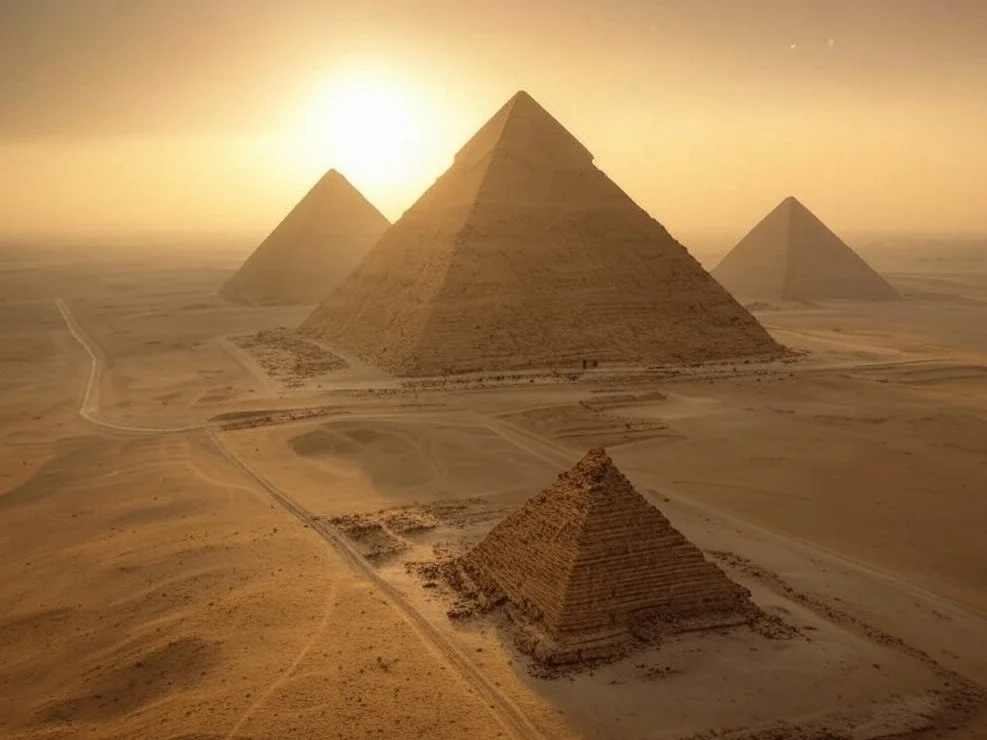Throughout history, civilizations have employed sacred geometry in the design of their monumental structures. From the precise alignment of the Egyptian Pyramids to the celestial connections of Stonehenge and the intricate layout of Angkor Wat, geometry played a crucial role in architecture, reflecting deep cosmological beliefs and spiritual significance.
The Pyramids of Egypt: Mathematical Precision and Cosmic Alignment
The Great Pyramid of Giza is a testament to the advanced understanding of geometry in ancient Egypt. The structure incorporates the golden ratio and the mathematical constant π, suggesting deliberate use of geometric principles. Furthermore, its alignment with cardinal points and its possible correlation with Orion’s Belt indicate a strong connection to celestial bodies, reinforcing the idea that geometry was a tool for both architectural mastery and spiritual meaning.
Stonehenge: A Megalithic Astronomical Calculator
Stonehenge in England exemplifies the use of geometric principles in sacred construction. Its circular design and specific positioning of massive stones correspond to solstices and lunar cycles, indicating a sophisticated understanding of astronomy. The monument’s layout suggests that its builders used sacred geometry not only for structural stability but also to create a place of ritual aligned with the movements of the heavens.
Angkor Wat: Harmonizing Earthly and Divine Proportions
Angkor Wat, the grand temple complex of Cambodia, is another striking example of sacred geometry in architecture. The entire site is designed using precise geometric ratios, with axial alignments reflecting Hindu cosmology. The central tower symbolizes Mount Meru, the mythical home of the gods, and the temple's layout mirrors astronomical cycles, demonstrating a seamless fusion of religious belief and mathematical precision.
The Cosmological Connection of Sacred Geometry
Ancient cultures viewed geometry as a bridge between the earthly and the divine. Whether in the perfect angles of pyramids, the circular formations of megaliths, or the intricate layouts of temples, sacred geometry provided a means to encode cosmic order into human-built environments. These structures were not merely functional; they were embodiments of harmony, reflecting the balance believed to govern the universe.
Conclusion
The use of sacred geometry in ancient monuments underscores the sophistication of early civilizations in both mathematics and cosmology. These designs were not arbitrary but intentional, serving as tools to align human existence with celestial forces. By studying these geometric marvels, we gain deeper insight into the spiritual and scientific knowledge of the past, revealing how ancient builders merged art, science, and faith into enduring legacies.







